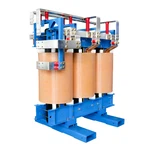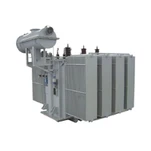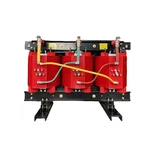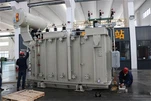Yes, a step-down transformer can be used as a step-up transformer, but there are a few considerations to keep in mind. Here's how it works and what you need to consider:
1. How It Works
Transformers are symmetrical devices, meaning they can work in both directions:
A step-down transformer reduces voltage by stepping it down from the primary (high voltage) to the secondary (low voltage) side.
If you reverse the connections, the secondary winding becomes the primary, and the primary winding becomes the secondary, effectively stepping up the voltage.
2. Conditions for Reversing Use
Reconnection:
Input and Output Voltage Levels:
The input voltage applied to the "secondary winding" (now used as the primary) should match the original design specifications of that winding.
For example, if the secondary winding is rated for 120V in a step-down transformer, that would be the input voltage when used as a step-up transformer.
Output Voltage:The output voltage will follow the original voltage ratio. For example:
A 240V-to-120V step-down transformer can be used as a 120V-to-240V step-up transformer.
Frequency:
The operating frequency must remain the same (e.g., 50 Hz or 60 Hz). Transformers designed for one frequency may not perform efficiently at another.
Current and Power Ratings:
The power rating (kVA) remains unchanged. If the transformer is rated for 5 kVA, it can handle 5 kVA in either step-up or step-down mode.
The winding used for high voltage will have thinner wire, so ensure it is not overloaded when carrying current as a secondary.
3. Practical Considerations
Core Design:
Some transformers are optimized for step-down operation, so their efficiency in step-up mode might be slightly lower.
Voltage Regulation:
Voltage regulation may differ when using a transformer in reverse. This is especially important in sensitive applications.
Tap Changers (if any):
If the transformer has taps for adjusting voltage, they may not work as intended in reverse operation.
Insulation and Safety:
Ensure that the insulation can handle the new voltage levels when reversing the roles of the windings.
4. When It's Suitable
Small transformers with simple designs are more commonly used in reverse because they lack complex features like tap changers or advanced insulation for specific applications.
Large or specialized transformers (e.g., autotransformers) might have limitations when used in reverse.
5. Summary
| Feature | Step-Down Transformer | Step-Up Transformer |
|---|---|---|
| Input Voltage | Primary winding | Secondary winding |
| Output Voltage | Secondary winding | Primary winding |
| Power Rating (kVA) | Same in both modes | Same in both modes |
| Efficiency | Slightly lower in reverse mode | Normal operation |










